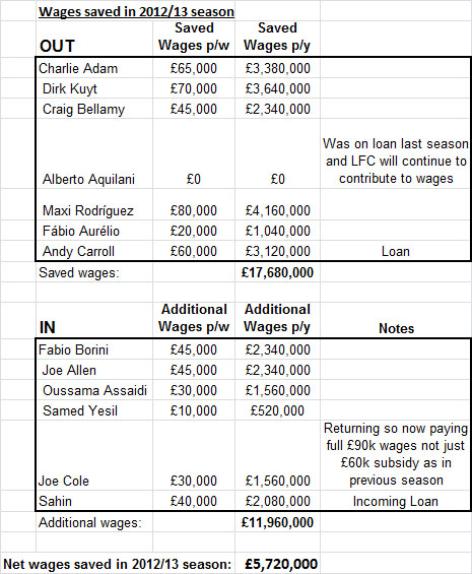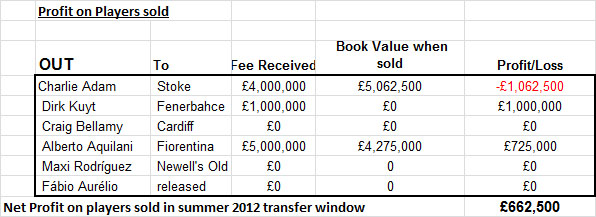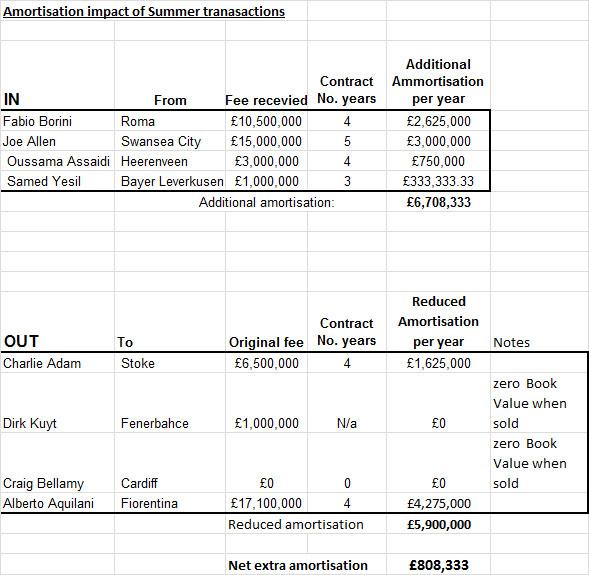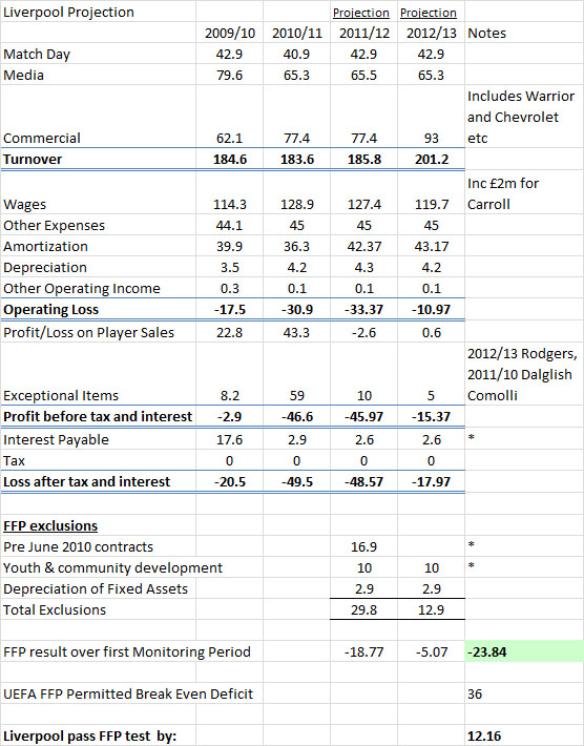Will Transfer Window activity affect Liverpool’s plan to meet FFP?
Will Transfer Window activity affect Liverpool’s plan to meet FFP?
Back in May I published an assessment of Liverpool's finances and a projection on whether they were on track to pass the FFP test (link). I pointed out that things were very tight and to meet FFP requirements the new manager would certainly not have 'war-chest' for new signings - existing players were going to be sold so he could bring new ones in. Since then, the club's owners have issued an 'open letter' to fans to outline the position to supporters (including an explanation of their desire to comply with FFP). With the Transfer Window now closed, it seems a good time to review the financial impact of the club's transactions.
With the help of Liverpool supporter @mdonald1987 I have attached details of the net impact of the Summer transfers on Liverpool’s profitability for the current season. Note: If you aren't familiar with how players are shown in the club accounts please read the paragraph at the end of this article.
The transfers have had an impact on three components of the club’s accounts: Wages, Profit on player sales, and on Amortisation.


Note: ‘Profit/loss on players sold’ is a line in the accounts that relates the profit above the Book Value for a player when sold (see end of article for an explanation on how this works).

Note: If you are new to the concept of Amortisation, refer to the end of the article.
Summary:
| ||||||||||||||||
The tables above show the impact that the Transfer Window transactions will have on the current financial year (i.e. the current season). When all transactions are considered (including the reported £2m loan fee for Carroll) Liverpool are a net £7.6m better off. It hardly needs pointing out that this isn't a huge amount - certainly not the £20m saving that some have quoted. Interestingly, annual wages have reduced by around £18m as a result of the departures. However, this was partially off-set by the £12m spent on incoming and returning players. Liverpool made fairly modest improvements to their Amortisation and made a small profit on the Book Value of the players sold.
Of course, the figures carry a health-warning and can only-ever be an approximation. The transfer fees are based on media reports and the wages are based on a mix of reported figures and estimates. Also, there may have been transactions that were not released and could possible affect picture - for example did Adam receive a portion of the fee (he doesn't appear to have submitted a transfer request)? Was the Carroll Fee £1m, £2m or £3m? It is also important to remember that Liverpool had to pay around £5m compensation to Rogers (something I had not included in my previous projection).
This brings us to Dempsey deal. A number of journalists and fans have questioned why the owners were haggling over what appeared to be a fairly paltry sum. However, when you consider the impact of the transactions that did go through, you can perhaps understand why the club wanted to keep things tight. Assuming a £5m up-front fee and approx £70k pw wages, the Dempsey transaction would have added around £5m to costs this season. However, as my projection (below) shows, the club did appear to have just enough FFP leeway to secure the deal and this suggests the deal may not have fallen through entirely due to financial constraints.
I have attached an updated financial projection which incorporates the information and is based on the projection I produced in May (link). They are based on the account period end of 31 July.

*see notes from article in May for more information on these items
The projection predicts that the club is set to pass the FFP test by around £12m – this is still pretty tight. The projection assumes a 6th place position and the club needs to ensure that their final league position broadly matches last season (remember that each league place is worth around £725,000). However the figures do suggest that there is some scope for some fairly modest expenditure in January. For Liverpool, next year's TV deal clearly represents the cavalry riding over the horizon for Liverpool. The club should be in much better position next season – we are currently in a season of repair and transition, following the excesses of the Comolli era.
Update 14 Sept:
In July 2012, Liverpool announced that they had changed their accounting period end from 31 July to 31 May, to better align their income streams to the timing of receipts. As a result the next published accounts will cover 10 months only (from 1 August 2011 to 31 May 2012). Consequently, the next published accounts will be hard to compare to previous years as wages and amortisation will appear at a lower level than shown above. Receipts from pre-season tours and some season ticket sales will not be included appear and some commercial income may be reduced. Overall, the change will help the financial position as portrayed in the Annual Accounts as two months wages will not now be included - however the change will also make a like-for-like comparison much more difficult for Liverpool fans.
Amortisation and Book Value
Under FFP rules, transfer fees have to be written off evenly over the life of the contract (a bit like a car is depreciated over time). When the accounts are produced, only the amount of depreciation (termed 'amortisation') is charged against the profits for the year (rather than the entire transfer fee). A club might buy a player for £20m on a 4-year deal but the club will only charge £5m against the first year's profits (with a further £5m expense recorded in the three subsequent years). A player's value is written-down over time (termed 'Book Value'). When a player is sold, the difference between their Book Value at the date of sale and the selling price is accounted for as a 'profit or loss on player sales' in the accounts during the year they are sold.
blog comments powered by Disqus
